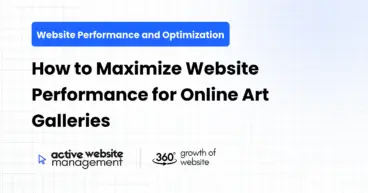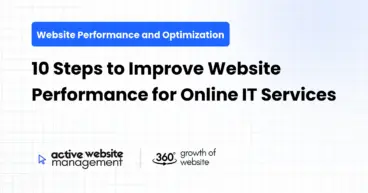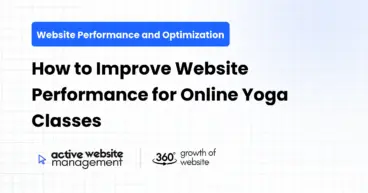December 16, 2024
8 min read
In the fast-paced world of web development and digital marketing, ensuring that your website provides an optimal user experience is more important than ever. Google has made it clear that page experience signals—specifically Core Web Vitals—play a crucial role in determining search engine rankings. But what exactly are Core Web Vitals, and how can you optimize your website to meet these standards?
In this article, we’ll dive deep into the Core Web Vitals, explain their importance, and provide actionable steps to optimize your website for improved performance and SEO rankings. Whether you’re a website owner, developer, or digital marketer, understanding and optimizing Core Web Vitals is key to enhancing user experience and boosting your website’s search visibility.
1. What Are Core Web Vitals?
Google defines Core Web Vitals as a set of metrics that measure the real-world experience of users interacting with a website. These metrics focus on loading performance, interactivity, and visual stability—all essential aspects of a user’s experience on a webpage. Improving these metrics leads to a better overall user experience and, consequently, a higher chance of ranking well on Google.
Let’s break down each of these metrics:
Largest Contentful Paint (LCP)
LCP measures the loading performance of a page. It tracks how long it takes for the largest content element (such as an image, video, or text block) to load and become visible to the user. Google recommends an LCP score of 2.5 seconds or less for optimal user experience.
How to improve LCP:
- Optimize server response times by using faster hosting or a Content Delivery Network (CDN).
- Optimize images and videos for faster load times (e.g., using WebP format for images).
- Use lazy loading for images below the fold, meaning they’ll load only when users scroll to them.
Don’t Just Maintain Your Website—
Grow It using Active Website Management! Don't Wait for Growth—Accelerate It with Active Website Management
FID measures interactivity. Specifically, it tracks how long it takes for a page to become interactive after a user clicks on it (e.g., pressing a button or a link). Google recommends an FID score of 100 milliseconds or less.
How to improve FID:
- Minimize JavaScript execution to reduce delays. Avoid heavy scripts that block the browser’s main thread.
- Use web fonts efficiently by preloading fonts to avoid delays in rendering text.
Cumulative Layout Shift (CLS)
CLS measures visual stability. It tracks how much the layout of a page shifts while it’s loading. For instance, if a page’s text shifts after an image or ad loads, it causes a poor experience for users. Google recommends a CLS score of 0.1 or less.
How to improve CLS:
- Set explicit sizes for images and videos so that they don’t shift when they load.
- Avoid content layout shifts caused by dynamically injected ads or pop-ups.
2. Why Are Core Web Vitals Important?
Core Web Vitals aren’t just about improving your website’s speed—they’re a critical factor in SEO performance. Here’s why:
Impact on SEO Rankings
Since Google announced that Core Web Vitals would be a ranking factor, websites that meet these metrics have a better chance of ranking higher in search results. Websites with good Core Web Vitals indicate to Google that they offer a better user experience, which is highly favored by the search engine.
User Experience and Retention
Websites that load quickly, are responsive, and visually stable create a better experience for users. A seamless experience encourages users to stay longer on your site, reducing bounce rates and increasing engagement. Websites that fail to provide a positive user experience risk losing visitors to competitors with better-performing sites.
3. How to Measure Core Web Vitals
Before diving into optimization, it’s essential to measure your website’s current performance. There are several tools available to help you assess your Core Web Vitals:
Don't Wait for Growth—Accelerate It with
Active Website Management Don't Wait for Growth—Accelerate It with Active Website Management
Google Search Console
Google Search Console’sCore Web Vitals report is a great place to start. It provides a summary of how your website is performing based on real user data. You’ll see whether your site is meeting the recommended thresholds for LCP, FID, and CLS.
PageSpeed Insights
PageSpeed Insights is another tool from Google that analyzes your website’s performance, providing detailed feedback on Core Web Vitals and offering optimization suggestions. It’s a great tool for seeing how your site performs on both mobile and desktop.
Lighthouse
Lighthouse is an open-source tool developed by Google that audits web pages for performance, accessibility, SEO, and more. It offers detailed insights into Core Web Vitals and can be run directly from the Chrome DevTools.
4. How to Optimize for Core Web Vitals
Now that you understand the importance of Core Web Vitals, let’s explore how to optimize each of the three metrics.
Optimizing Largest Contentful Paint (LCP)
Improve Server Response Time
A slow server response time can drastically affect LCP. Using a Content Delivery Network (CDN) and optimizing your server configuration can help reduce latency and improve load times.
Optimize Images and Videos
Large images and unoptimized video files can slow down LCP. Ensure that your images are compressed and use modern formats like WebP or AVIF. Additionally, videos should be optimized for the web, reducing their size without sacrificing quality.
Lazy Loading
Implement lazy loading to load images and videos only when the user scrolls to them. This can significantly reduce initial load time and improve LCP.
Minimize JavaScript Execution
Heavy JavaScript can block the main thread, delaying user interaction. Minimize and defer non-essential JavaScript, and break long-running scripts into smaller, asynchronous tasks.
Optimize Web Fonts
Web fonts often cause delays because the browser has to download them before rendering text. Use font-display: swap in CSS to ensure that text is visible using fallback fonts while custom fonts load in the background.
Preventing Cumulative Layout Shift (CLS)
Set Size for Images and Ads
Ensure that you define size attributes for images, videos, and ads in your HTML/CSS. This prevents layout shifts caused by media that loads asynchronously.
Avoid Layout Shifts
Avoid injecting dynamic content such as ads, pop-ups, or new elements that can cause the page layout to shift unexpectedly. This is especially important when loading pages with a lot of third-party scripts.
5. Best Practices for Core Web Vitals Optimization
Along with the steps mentioned above, here are a few additional best practices to help you optimize your Core Web Vitals:
- Use HTTP/2 or HTTP/3: These protocols improve server communication and reduce latency.
- Cache assets: Enable browser caching for static assets (e.g., images, CSS, JS) to avoid re-fetching them on every page load.
- Use critical CSS: Extract and inline the critical CSS needed to render the above-the-fold content of your page. This reduces render-blocking resources.
- Prioritize visible content: Load the content that’s visible to users first. This is often called “above-the-fold” content.
6. How Active Website Management Can Help
At Active Website Management, we specialize in continuous website improvements that help your site meet the latest performance standards, including Core Web Vitals. Here’s how we can assist:
- Continuous Monitoring: We constantly track your website’s performance, ensuring that any issues with Core Web Vitals are identified and addressed promptly.
- Expert Optimization: Our team of experts specializes in improving loading speeds, interactivity, and visual stability through best practices and advanced techniques.
- Strategy Development: We work with you to develop a tailored strategy for improving your website’s performance. Each month, we focus on key areas to ensure your site evolves and grows in line with your business goals.
For more information on how our services can enhance your website, check out our plans and pricing.
7. Conclusion
Optimizing your website for Core Web Vitals is essential for both user experience and SEO success. By improving metrics like LCP, FID, and CLS, you’ll provide a better experience for your visitors, which can lead to higher search rankings and greater user engagement. Follow the tips outlined in this article, and use tools like Google Search Console, PageSpeed Insights, and Lighthouse to monitor your progress.
At Active Website Management, we’re here to help you achieve continuous website growth through active management and optimization. If you want to ensure that your website is always performing at its best, reach out to us for expert website management services. Together, we can make sure your website stays fast, secure, and user-friendly for years to come.






